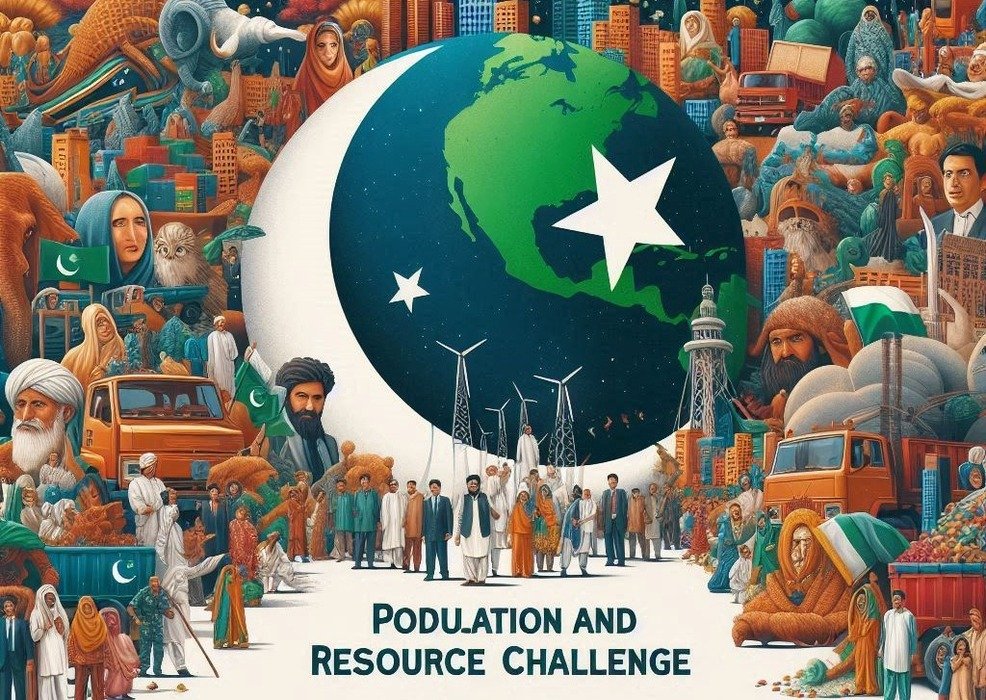Note from Pak NGOs: We are pleased to announce that this article is the 3rd best article in the competition. Congratulations to Mr. Hamid Abbasi for writing such a wonderful piece. Please note that the Pak NGOs team has edited it to correct minor errors and improve clarity.
As I sat down to write this piece, news emerged that Elon Musk, the mastermind behind Tesla, SpaceX, and Twitter (now X), welcomed a newborn. At 52, this brings his tally to 12 children. While surprising, it is less so considering his fortune, estimated at over $200 billion.
An “ideal” population growth rate has never been universally agreed upon, simply because it does not exist. The rate depends on the resources available to support growth in a specific country or region. Consequently, population growth policies are also specific to each country, with some struggling to populate and others eager to curb growth. Pakistan, for instance, faces a growth issue, with too few resources to support a population of over 245 million. Thus, while curtailing mass population growth is crucial, long-term initiatives to boost resources—from public health to welfare—are equally significant.
From a peak population growth rate of almost 4.4% in 1981 to a mean of 1.2% in 2016, Pakistan has made progress. However, recent trends showing an average growth rate of 1.9% reflect an upsurge. The global average for population growth is approximately 1.3%. For comparison, Indonesia, a fellow Muslim country, clocked a population growth rate of 0.9% in 2021-2022, whereas Pakistan averaged 1.8%, almost twice as much.
Clearly, our resources are nowhere near sufficient to support our population trends. Now, let’s discuss the most appropriate instruments for population curtailment. It is not rocket science for parents to assess their ability to support a certain number of children. They are the best judges of their necessities, such as health, education, food, entertainment, and available means. The nucleus of the curtailment approach is the family unit or precisely the parents. If this seems so simplistic, how have we ended up with an average household size of 6.4 persons? The problem lies here.
In a conservative society like Pakistan, religion is an instrument that can drive positive change unless misinterpreted and misrepresented. The same instrument, however, has been misused by enemies of peace to mislead the masses. We are fundamentally vulnerable to such misinterpretation, with little or no quality education for the masses. A common belief in both rural and urban settings is that family planning is un-Islamic or against the true spirit of religion. Other factors include tribal or semi-tribal settings and exclusive agricultural regions where household members, especially males, dominate societal strength. This reflects a lack of awareness, understanding of religion, and literacy as driving forces behind our unsustainable population boom.
To address this, we must focus on households as agents of change, engaging the masses through religious thought, rational realization, and education. Family planning programs, credited to the dedication of community workers, have succeeded in fusion with social and religious forces, while negation from the same has failed. Similarly, curriculum plays an equal role in educating future generations and adults engaged through corresponding processes.
On a macro level, the state is the custodian of the “means or resources” necessary for managing the population. While households focus on micro-interventions, the state must cater to basic needs, including social services and avenues for economic growth. Unfortunately, with marginal resource allocation from provincial to national levels to such vital issues, the present population is severely vulnerable. For instance, education, the key to curbing misperceptions, requires adequate investment in formal and informal education, supplemented by specialized family planning programs to cover the maximum populace.
In conclusion, there is no short-term solution to this issue, nor a singular approach. Neither the state nor households alone can undertake the necessary corrective measures. A long-term, well-crafted, targeted approach is needed to overcome these shortcomings. NGOs can play their role but their scope is limited. The state will have to intervene.
We need a Pakistan where tomorrow’s children experience sustained population growth proportional to our resources, supported by a state equipped to cater to their basic needs. Through consistent focus and collaborative effort, achieving an equilibrium between population and resources is within reach.





Add a comment